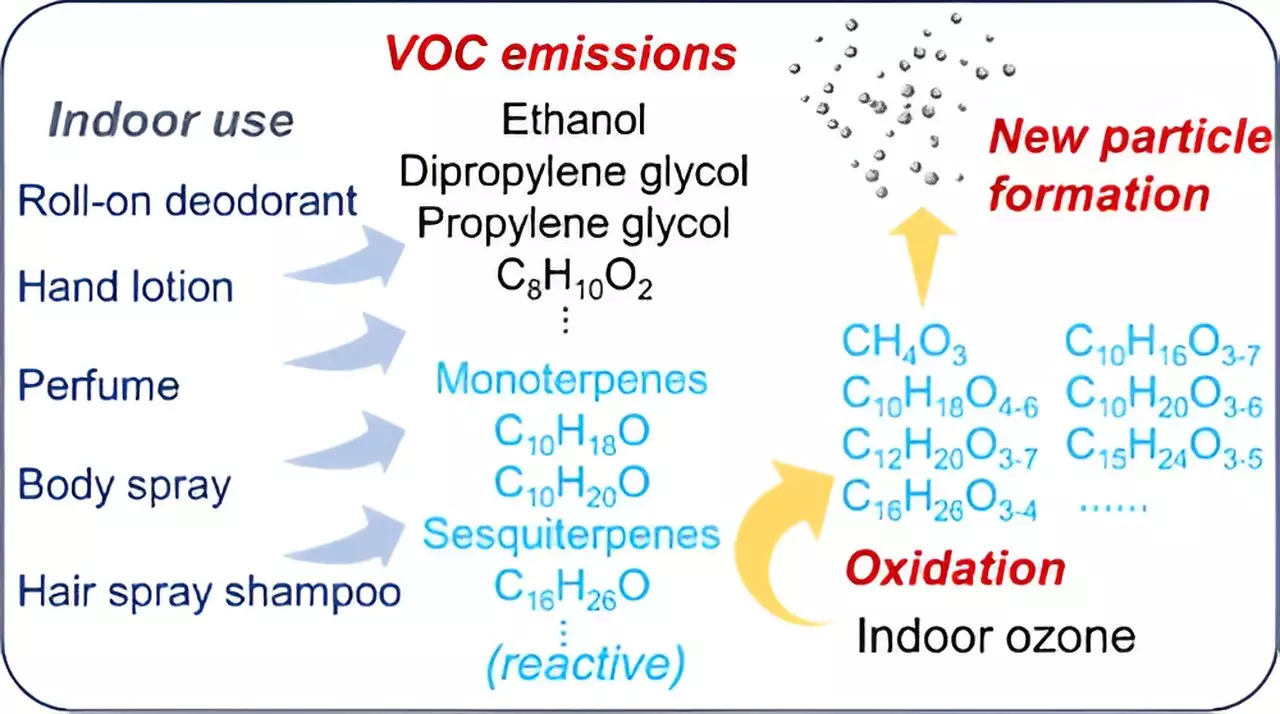In our pursuit of personal grooming and hygiene, we often overlook the consequences that commonly used personal care products can have on our indoor environments. A recent investigation by researchers at the École Polytechnique Fédérale de Lausanne (EPFL) reveals that items such as deodorants, lotions, and perfumes release a blend of over 200 volatile organic compounds (VOCs) when used indoors, significantly impacting indoor air quality. This study underscores an alarming reality: the products we apply to our bodies may pose unseen risks to our respiratory health, raising questions about long-term exposure and its potential effects on wellness.
Led by Dusan Licina, an assistant professor at EPFL, the study drew upon the efforts of a diverse team from Switzerland, Germany, and Sweden. They conducted their experiments in controlled environments that mimic the characteristics of typical indoor spaces. Utilizing sophisticated environmental chambers, researchers closely monitored the air quality while simulating the application of popular personal care products, such as roll-on deodorants and hand lotions. The intricate setup involved controlled release of ozone—a common atmospheric gas—further exacerbating the formation of secondary pollutants through chemical reactions.
In the absence of ozone, the results revealed a staggering output of over 200 VOCs, with ethanol and monoterpenes being the primary components. However, the true intrigue unfolded when ozone was introduced into the setting, subsequently generating new VOCs and particulate matter that potentially bore resemblance to the toxins often found in urban smogs.
The interaction between VOCs and ozone leads to complex chemical reactions with troubling implications. As Licina pointed out, certain molecules nucleate to form new particles that can potentially penetrate deep into the lungs. The researchers discovered that the levels of certain pollutants exceeded those observed in densely populated urban areas, such as Zurich, raising critical alarms about the safety of daily product usage in confined spaces.
This finding is especially concerning given that inhaling these compounds over time could have detrimental health effects, yet comprehensive studies and analyses are still needed to establish a clear understanding of the health ramifications. The reliance on personal care products, which are often applied near the upper respiratory tract, further complicates this issue, warranting greater scrutiny and the necessity for further research.
To mitigate the adverse effects of personal care products on indoor air quality, several proactive measures can be considered. Firstly, enhancing building ventilation during the application of such products could play a significant role in reducing exposure. Furthermore, the incorporation of air purification technologies, such as activated carbon filters, could assist in reducing the concentration of airborne pollutants.
Additionally, another significant recommendation from the research team involves rethinking our dependence on these chemical-laden products. Licina emphasizes the potential benefits of opting for natural alternatives, which may not only help in minimizing VOC emissions but may also be less harmful to human health. This proactive approach to reimagining product formulations and consumer choices may ultimately foster a safer indoor atmosphere.
The findings from EPFL’s research serve as an urgent reminder to reconsider our everyday habits concerning personal care products. As consumers, we must cultivate awareness about the implications these seemingly harmless items may have on our health and indoor environments. Transitioning towards safer, more natural alternatives can be a formidable step toward improving indoor air quality. This collective shift can also prompt manufacturers to prioritize and innovate products that align with health-conscious measures. Ultimately, fostering a culture of responsibility and awareness around the products we choose to incorporate into our lives could yield significant benefits for both our health and the environment.


Leave a Reply